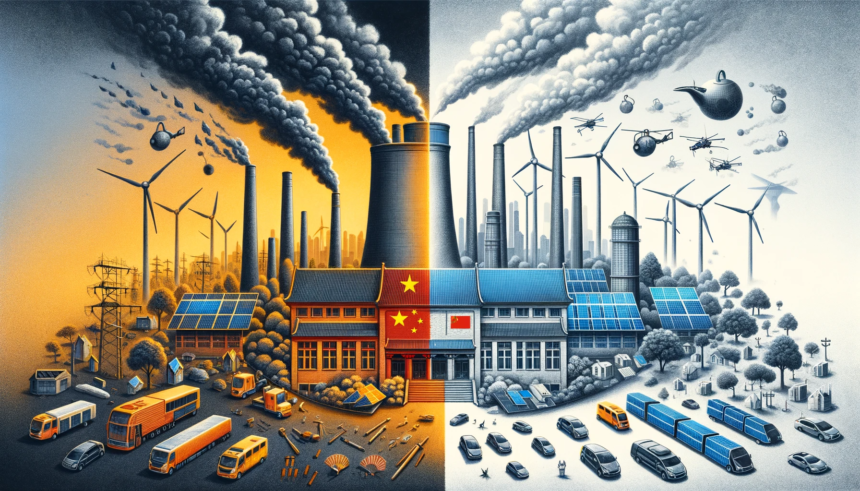Introduction to a New Era of Climate Change in China
In a world grappling with climate change, China’s clean energy transformation emerges as a beacon of hope and action. As the world’s largest emitter, accounting for 27% of global carbon dioxide emissions, China’s historic reliance on coal and vast manufacturing enterprises have long painted a grim picture. However, the nation’s remarkable pivot towards renewable energy, as highlighted in the recent COP28 climate talks, signals a significant shift in global climate action.
China’s Energy Profile: Past and Present
China’s energy landscape has been dominated by coal, the backbone of its industrial growth. With the world’s largest coal power fleet, China approved an astounding 106 gigawatts of new coal plants last year alone. Yet, this narrative is rapidly changing. China is now the world’s largest manufacturer of solar panels and wind turbines, and its domestic push towards green power is unprecedented. In just this year, China installed enough solar, wind, hydro, and nuclear capacity to match the entire electricity consumption of France.
The Turning Point at COP28
The COP28 climate talks, buoyed by the Sunnyland Statement between China and the United States, marked a turning point. China’s Special Climate Envoy, Xie Zhenhua, emphasized:
“China is a country of engineers, who see these challenges as technical rather than economic.”
This perspective has catalyzed China’s leadership in every low-carbon category, from solar and wind energy to electric vehicle production. Moreover, over 53% of China’s electricity in the first three quarters of 2023 came from low-carbon sources like hydro, wind, solar, bioenergy, and nuclear.
Technological Innovations Driving Change
China’s approach, focusing on technological solutions, has resulted in staggering achievements. The country’s total installed renewable capacity accounts for a third of the world’s total. Large-scale deployments, like the 15.7 GW solar project in Qinghai province, have not only bolstered renewable energy but also contributed to environmental conservation. These innovative projects exemplify China’s commitment to finding holistic solutions to climate change.
Future Prospects and Global Implications
At COP28, China supported global calls to triple renewable capacity by 2030 and tackle methane emissions. However, challenges remain, especially in energy efficiency. The joint energy efficiency work between the US and China, restarted in November, is a step towards addressing these challenges. The world is watching as China balances its rapid clean energy growth with the need for sustainable and efficient energy use.
Conclusion
China’s clean energy transformation is not just a national achievement but a pivotal moment in global climate action. As China leads with technological innovations and large-scale renewable deployments, the world gains a valuable model for sustainable development. We encourage our readers to share their thoughts and insights on this transformative journey. How do you see China’s role in shaping a greener future? Join the conversation in the comments below.
More news on the journey to clean energy, on our homepage!











